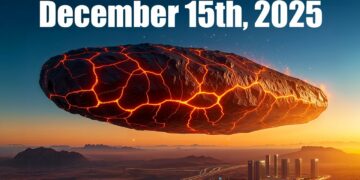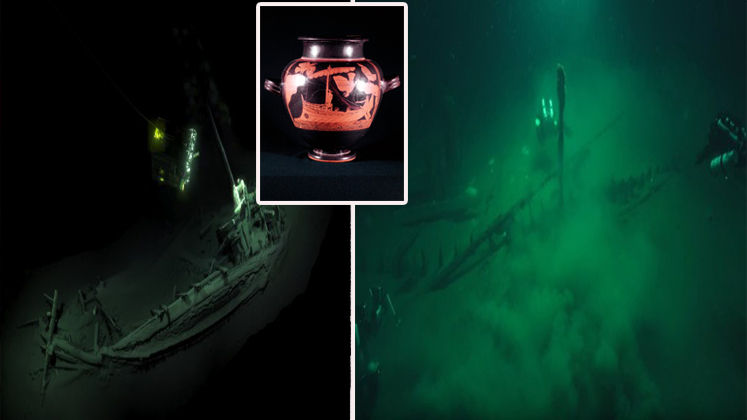The James Webb Space Telescope (JWST) is revolutionizing our understanding of the universe, prompting a potential overhaul of cosmology textbooks. Its unprecedented images have stunned scientists, revealing countless galaxies, each containing roughly 100 billion stars. Renowned physicist Michio Kaku has called this discovery a game-changer, suggesting that our theories about the universe’s origin may need revision. These findings challenge existing models of cosmic creation and evolution, raising questions about what JWST has uncovered and why Kaku considers it the most significant revelation of our lifetime.
The Sun, humanity’s closest star, has been a focal point of fascination for millennia, providing the light and warmth that sustain life on Earth. Its life cycle, driven by nuclear fusion, sees hydrogen atoms fuse into helium, releasing immense energy. Over billions of years, the Sun will evolve through phases: the main sequence, a red giant stage—potentially engulfing Mercury, Venus, and altering Earth’s environment—and finally shedding its outer layers to become a white dwarf. This cycle reflects the transient nature of all stars, which undergo birth, evolution, and decay, shaping the dynamic cosmos. Early humans observed stars as glowing points forming constellations, but advancements in optics revealed them as burning spheres of hydrogen and helium. The realization that our Sun is one of billions in the Milky Way, and that countless galaxies exist beyond, expanded our cosmic perspective. Modern research on the Sun’s magnetic fields, corona, and solar winds helps protect satellites and power grids while informing studies of life around other stars.
Before advanced telescopes, early astronomers saw only scattered stars and fuzzy patches, later identified as galaxies. In the early 20th century, Edwin Hubble’s observations at Mount Wilson Observatory proved these “nebulae” were distant galaxies, transforming our view of the cosmos. This spurred the development of telescopes capturing light across visible, ultraviolet, and infrared wavelengths, revealing galaxies’ diverse shapes—spiral, elliptical, and irregular—and their formation, evolution, and collisions. Ground-based telescopes faced limitations like atmospheric distortion and light pollution, leading to space observatories like the Hubble Space Telescope, which provided sharper images. The need to detect faint infrared signals from ancient galaxies drove the creation of JWST, designed to observe light redshifted by the universe’s expansion.
JWST, a collaborative effort led by NASA with the European and Canadian Space Agencies, was launched in December 2021. Positioned 1.5 million kilometers from Earth at the second Lagrange point, it observes in infrared to peer through cosmic dust and study galaxies formed shortly after the Big Bang. Its tennis court-sized sunshield and segmented mirror, folded for launch, required flawless deployment in space. JWST’s instruments, including the Near-Infrared Camera (NIRCam), Near-Infrared Spectrograph (NIRSpec), and Mid-Infrared Instrument (MIRI), capture detailed images and spectra, revealing early galaxy formation, star birth, and exoplanet atmospheres. Its fine guidance sensor ensures precise targeting.
JWST’s data has challenged cosmological models. Early galaxies, observed 500–700 million years after the Big Bang, appear surprisingly massive and mature, with older, redder stars rather than the expected young, blue ones. This suggests rapid star formation or unknown processes, prompting debates about cosmic evolution and the role of dark matter or exotic physics. Spectroscopic analysis is ongoing to confirm these findings, which may reshape our understanding of galaxy growth and the universe’s expansion rate.
JWST also reveals dramatic galaxy interactions, like those in Stephan’s Quintet, where a rogue galaxy’s shock waves stir molecular hydrogen, potentially triggering star formation. These observations highlight how collisions drive cosmic evolution. Beyond galaxies, JWST has unveiled star-forming regions in the Carina Nebula, the chaotic death of stars in the Southern Ring Nebula, and chemical signatures in exoplanet atmospheres. In our solar system, it has detailed Jupiter’s atmosphere, Titan’s methane seas, and faint comets, aiding future missions.
Future studies will leverage JWST’s instruments for deeper spectroscopic surveys, wide-field mappings, and multi-wavelength observations with ground-based telescopes. Its findings are refining theories about star formation, element production, and the Hubble constant, while fueling public interest and inspiring next-generation astronomers. JWST’s success has spurred plans for advanced telescopes and missions to study exoplanets and solar system moons, ensuring continued exploration of the universe’s mysteries. Each discovery underscores JWST’s transformative impact, justifying its ambitious engineering and cost.






















